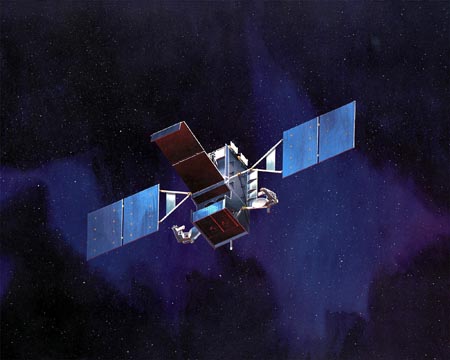 Air Force Space Command has accepted GEO-2, the second Space Based Infrared System geosynchronous satellite, for operations, announced service space officials. GEO-2’s performance matches that of GEO-1, the first SBIRS satellite, and in some cases exceeds it, states the Space and Missile Systems Center’s release. Air Force testers began the operational trail period with GEO-2 on Oct. 21, five months ahead of the original schedule, according to the Nov. 26 release. The early start was due to efficiencies learned during the checkout process for GEO-1. The Air Force and its industry partners launched GEO-2 into orbit in March. Along, with GEO-1 and two SBIRS payloads on satellites in highly elliptical orbits, GEO-2 is part of the new constellation designed to provide warning of missile launches around the globe and collect other types of infrared intelligence. SBIRS spacecraft complement and will eventually replace legacy Defense Support Program satellites. In May, AFSPC declared GEO-1 fully operational. The 460th Space Wing at Buckley AFB, Colo., operates the SBIRS assets. Lockheed Martin is the SBIRS prime contractor. Northrop Grumman supplies the sensor payloads.
Air Force Space Command has accepted GEO-2, the second Space Based Infrared System geosynchronous satellite, for operations, announced service space officials. GEO-2’s performance matches that of GEO-1, the first SBIRS satellite, and in some cases exceeds it, states the Space and Missile Systems Center’s release. Air Force testers began the operational trail period with GEO-2 on Oct. 21, five months ahead of the original schedule, according to the Nov. 26 release. The early start was due to efficiencies learned during the checkout process for GEO-1. The Air Force and its industry partners launched GEO-2 into orbit in March. Along, with GEO-1 and two SBIRS payloads on satellites in highly elliptical orbits, GEO-2 is part of the new constellation designed to provide warning of missile launches around the globe and collect other types of infrared intelligence. SBIRS spacecraft complement and will eventually replace legacy Defense Support Program satellites. In May, AFSPC declared GEO-1 fully operational. The 460th Space Wing at Buckley AFB, Colo., operates the SBIRS assets. Lockheed Martin is the SBIRS prime contractor. Northrop Grumman supplies the sensor payloads.
Retired Col. Carlyle "Smitty" Harris, known for introducing the "tap code" by which American POWs in North Vietnam could surreptitiously communicate with one another, died July 6. Harris was brutalized by the North Vietnamese over almost eight years of captivity.